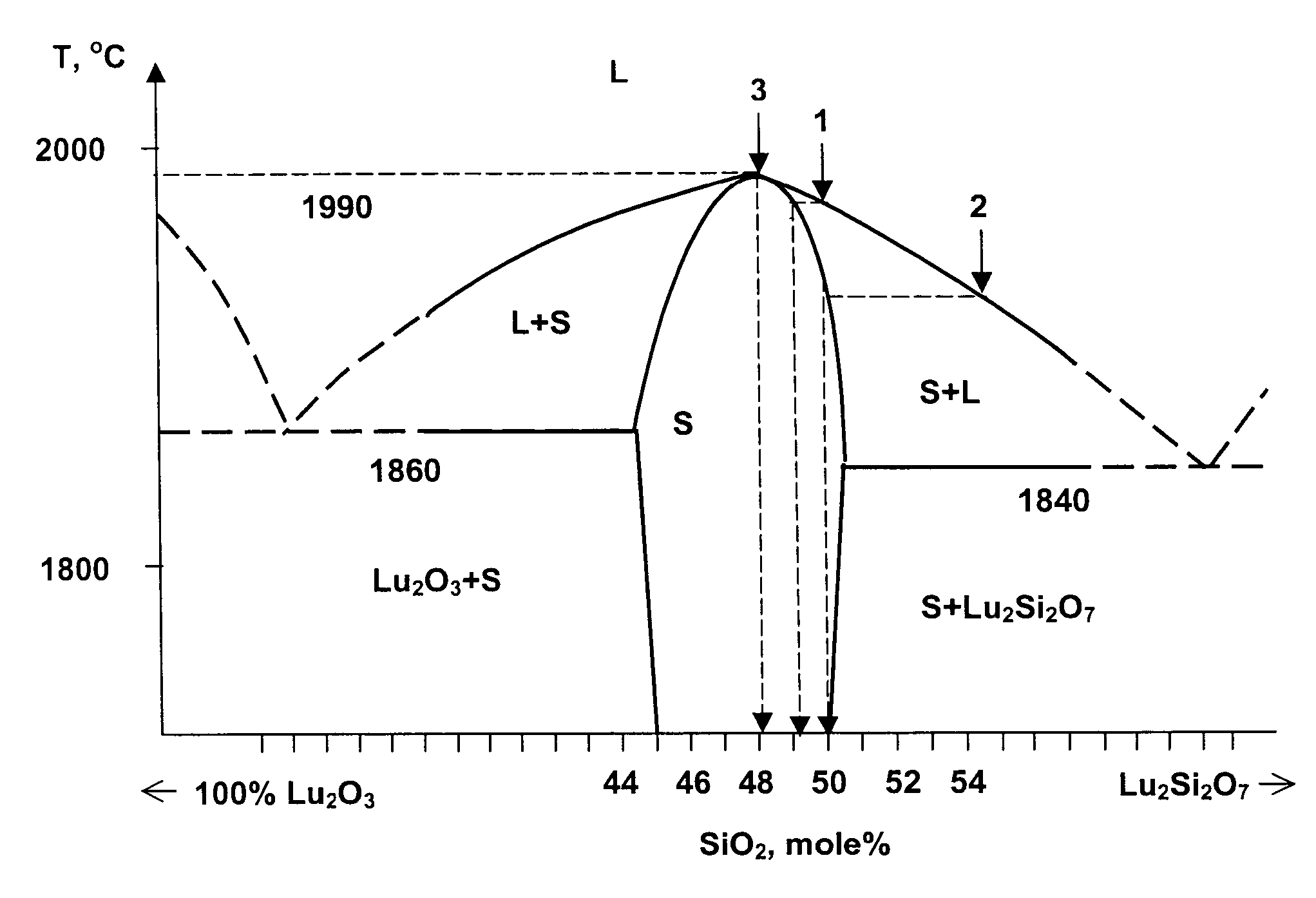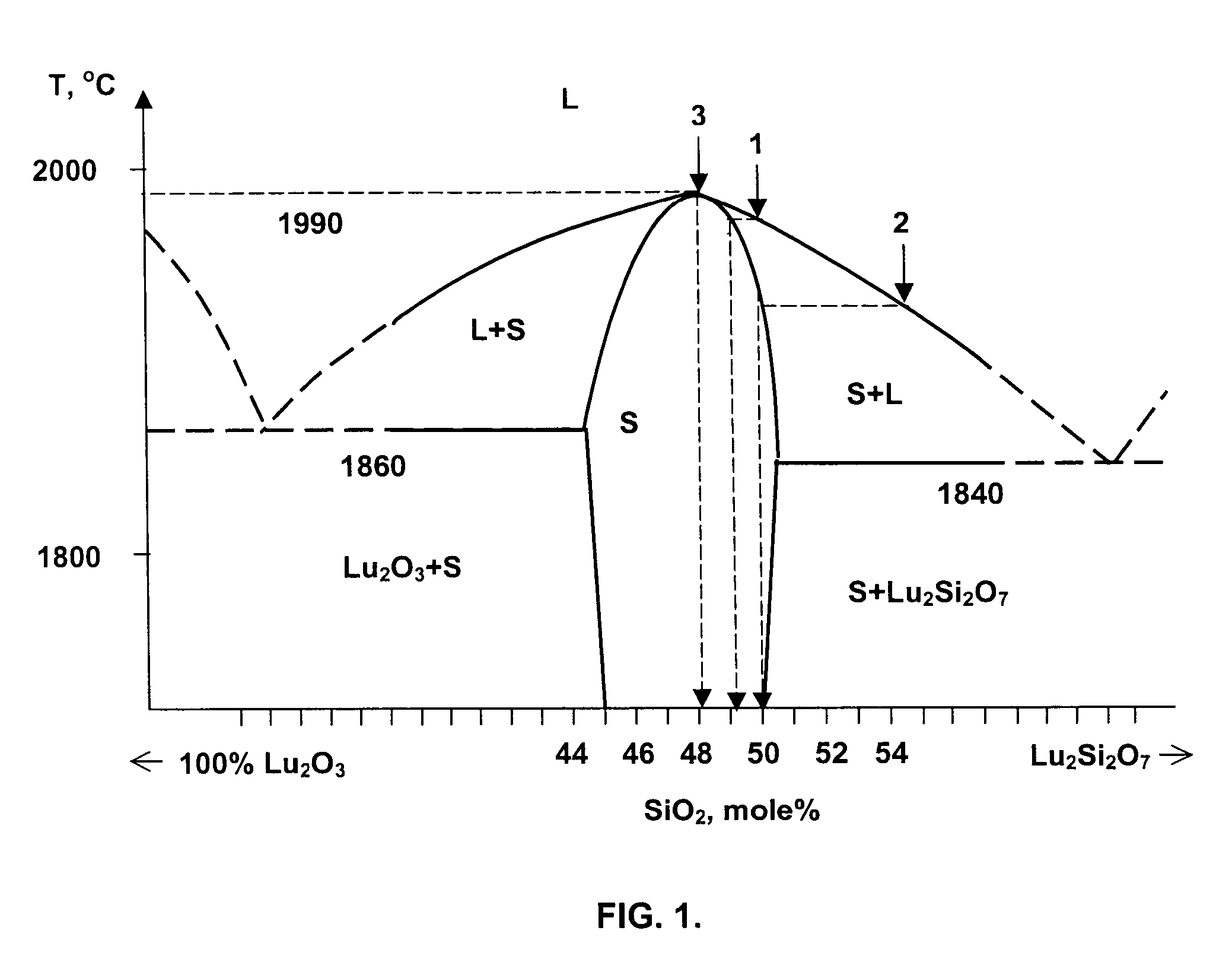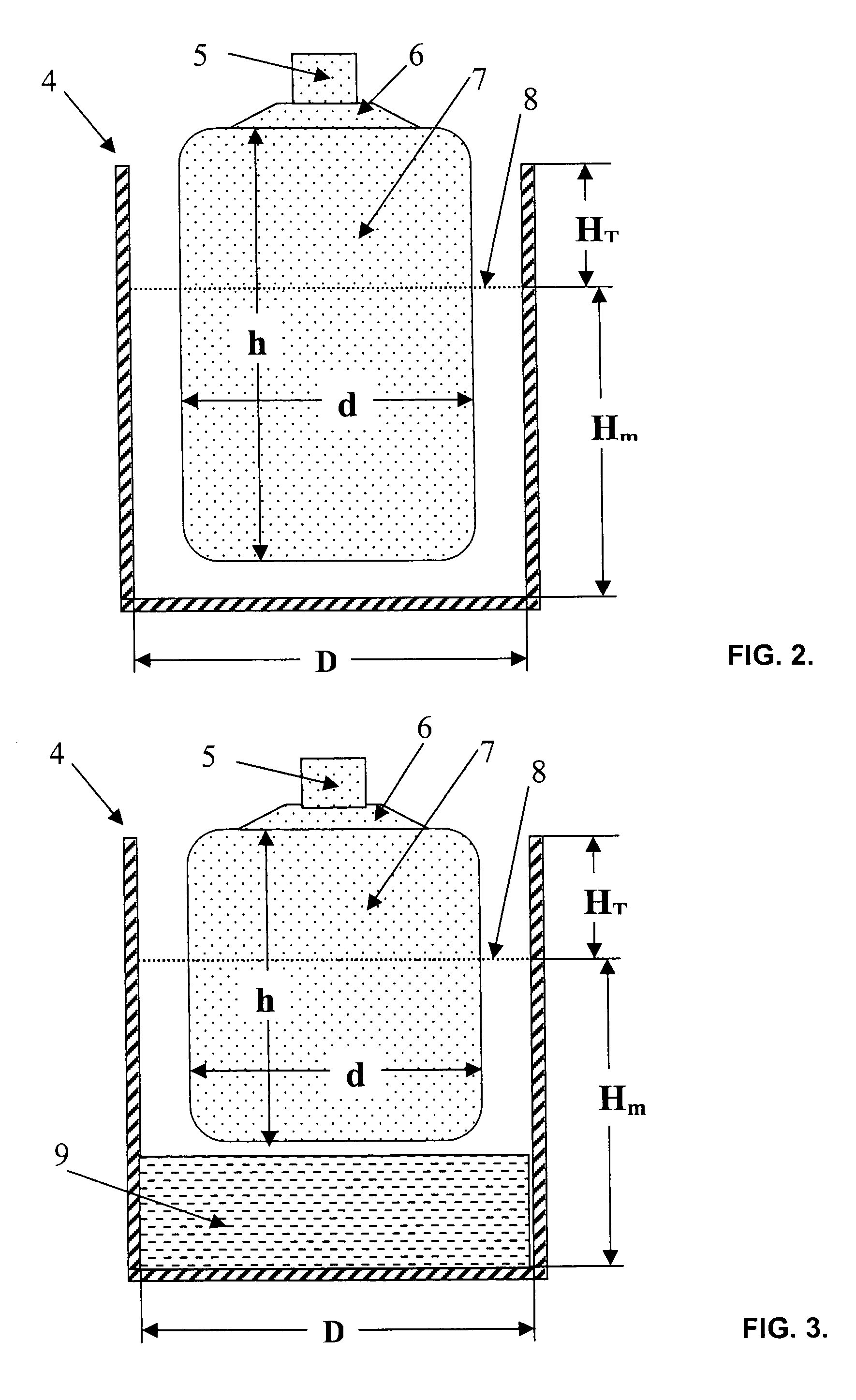Scintillation substances (variants)
a technology of scintillation substance and scintillation substance, which is applied in the direction of radiation measurement, crystal growth process, radiation measurement, etc., can solve the problems of large spread, significant reduction of light yield, afterglow effect, etc., and achieve the elimination of expansive losses of scintillation substance, high light yield, and reduced manufacturing cost of finished scintillation elements
- Summary
- Abstract
- Description
- Claims
- Application Information
AI Technical Summary
Benefits of technology
Problems solved by technology
Method used
Image
Examples
example 1
[0135]Growth of known a “reference” Ce:Lu2SiO5 crystal having the Lu / Si=2 ratio, and also the growing of crystal having a ratio of formula units of (Lu+Ce) / Si=2.061 (y=0.015), which is out of compositions range of variant No1 of given invention.
[0136]Due to a strong data spread about the crystal parameters published in the different issues, the parameters of commercial Ce:Lu2SiO5 crystals may be accepted as the most reliable data. The higher light output is demonstrated by the LSO crystals, having a concentration of cerium ions equaled to 0.12 at. % (or about 0.002 f. units), the chemical formula of reference crystal is Ce0.002Lu1.998SiO5. Taking into account that the segregation coefficient of the cerium ions between a melt and growing crystal is equaled about k=0.2, it is needed to charge a crucible with the starting material having a cerium concentration about 0.6 at. % (or in the formula units: 0.012 f. units). A ratio of the Lu2O3 and SiO2 oxides should be calculated taking int...
example 2
[0141]A confirmation of the invention in the particular forms of implementation—the method of making of scintillation substances. To grow a large single crystal by Kyropoulos method according with the variants #1, #2, #3, and #4, an optimal scintillation substance having a composition of charge characterised by an oxides mole ratio of 51.9% (Ce2O3+Lu2O3+A2O3+Li2O) / 48.1% SiO2 was chose. At such oxides ratio, the compositions of a melt and of a crystal are characterised by a chemical formula of CexLiq+pLu2.076−p−x−zAzSi0.962O5.038−p, where A is at least one element selected from the group consisting of Gd, Sc, Y, La, Eu, Tb, x is a value between 1×10−4 f. units and 0.02 f. units, z is a value not exceeding 0.05 f. units, q+p is a value not exceeding 0.025 f. units.
[0142]The growing of crystal 78 mm in diameter was executed from iridium crucible of 96 mm in inner diameter and about 112 mm height using the computer-controlled installation equipped with a weighing system of growing cryst...
example 3
[0148]Method of making of the scintillation substances in form of scintillating ceramics on the basis of lanthanum and lutetium oxyorthosilicate differed in that the mixture of chloride water solution of Lu, La, Ce and liquid of SiCl4, are used as a starting material for preparation of charge of composition characterised by the oxides mole ratio of 51.9%(Lu2O3+La2O3+Ce2O3) / 48.1%SiO2 An ammonium carbonate water solution was added to the said mixture. Then this mixture was filtering, drain and drying. After calcination at 1400° C. the obtained oxides mixture stirred with addition of solvent and low-melting impurities, which promote an atoms diffusion through boundary of grains during a final high temperature annealing. The numerous compounds may be used as the low-melting impurities, which do not influence on an emission of Ce3+ ions. Our investigations showed that the small additives of Li, Na, K, Cs, Be, B, F, Al, S, Cl, Zn, Sc, Ga, Ge, Se, Br, I, Sn, and In ions do not lead to decr...
PUM
| Property | Measurement | Unit |
|---|---|---|
| transparent | aaaaa | aaaaa |
| volume | aaaaa | aaaaa |
| volume | aaaaa | aaaaa |
Abstract
Description
Claims
Application Information
 Login to View More
Login to View More - R&D
- Intellectual Property
- Life Sciences
- Materials
- Tech Scout
- Unparalleled Data Quality
- Higher Quality Content
- 60% Fewer Hallucinations
Browse by: Latest US Patents, China's latest patents, Technical Efficacy Thesaurus, Application Domain, Technology Topic, Popular Technical Reports.
© 2025 PatSnap. All rights reserved.Legal|Privacy policy|Modern Slavery Act Transparency Statement|Sitemap|About US| Contact US: help@patsnap.com



